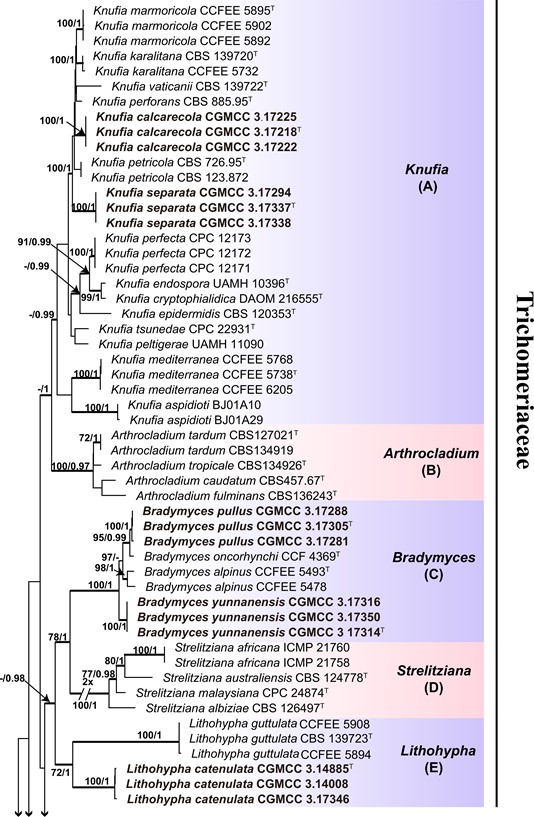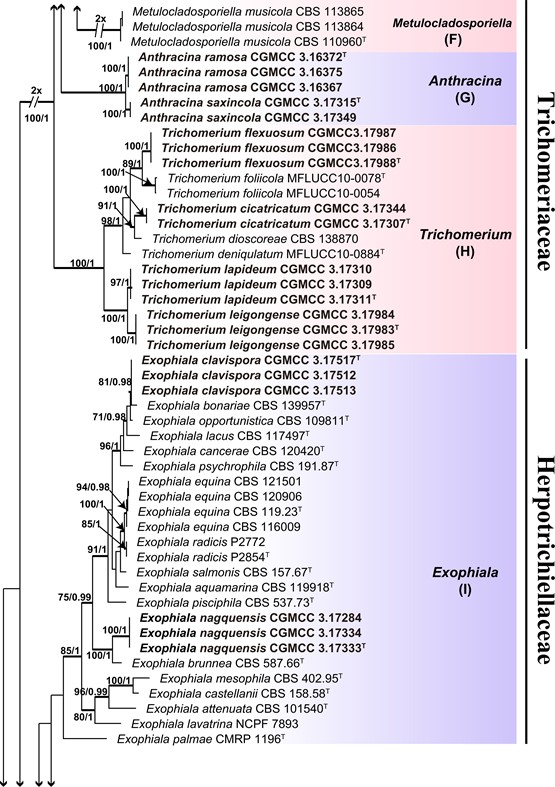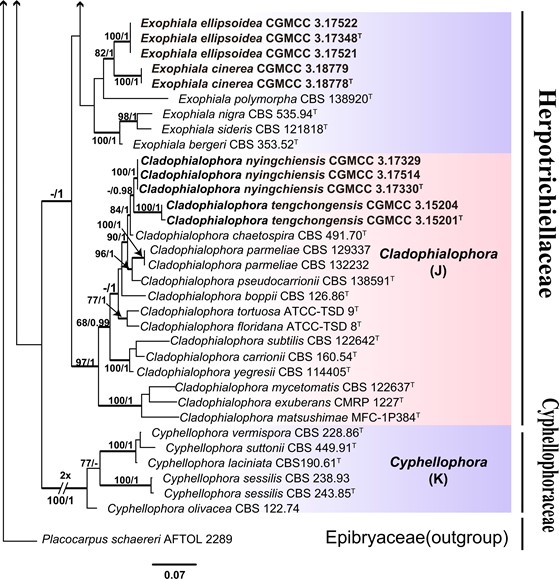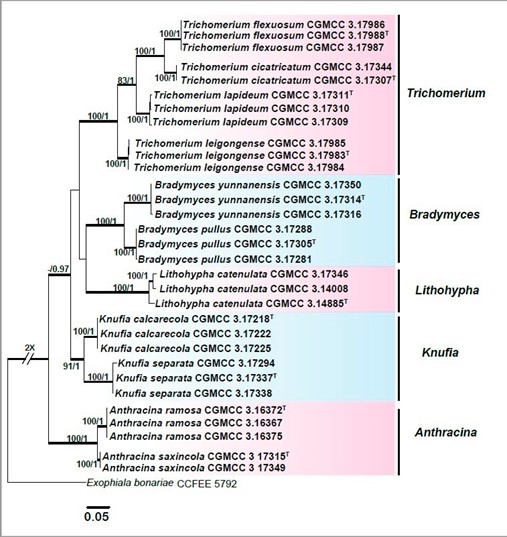Anthracina L. Su, W. Sun and M.C. Xiang, gen. nov.
Index Fungorum number: MB810883; Facesoffungi number: FoF
Etymology: anthracina (Lat., fem. adj.), referring to the coal-black color of the colonies. Colonies on MEA are slow-growing, with minimal expansion on agar media, black to dark brown,velvety, and with irregular margin. Hyphae branched, composed of irregular, hyaline to light-yellow cells. Swollen cells intercalary or terminal. Conidiogenesis, if present, results in endoconidia from vegetative cells.
Type of species: Anthracina ramosa L. Su, W. Sun and M.C. Xiang
Notes: – Phylogenetic analyses based on the combined two or five loci strongly supported the establishment of the new genus in Trichomeriaceae (Figures 2 and 3).

Figure 2. Cont.

Figure 2. Cont.

Figure 2. Phylogenetic tree generated by the maximum likelihood analysis using combined sequences of the internal transcribed spacer region (ITS) and partial nuclear ribosomal large subunit (nucLSU) loci of the families Trichomeriaceae and Herpotrichiellaceae. Bootstrap values ≥70% (left) and Bayesian posterior probability values ≥0.95 (right) are indicated at nodes (maximum likelihood/Bayesian inference or ML/BI). Thickened branches represent posterior probabilities (>0.95) from BI. Placocarpus schaereri strain AFTOL 2289 is used as the outgroup. Novel sequences generated in this study are indicated in bold. Ex-type cultures are marked with ”T”.

Figure 3. Phylogenetic tree generated by the maximum likelihood analysis using combined sequences of ITS, nucLSU, mitochondrial small subunit ribosomal DNA (mtSSU), the largest subunit of RNA polymerase II (RPB1), and the partial β-tubulin gene (TUB) loci of the family Trichomeriaceae. Bootstrap values ≥70% (left) and Bayesian posterior probability values ≥0.95 (right) are indicated at nodes (ML/BI). Thickened branches represent posterior probabilities (>0.95) from BI. Novel sequences generated in this study are indicated in bold. Exophiala bonariae strain CCFEE 5792 is used as the outgroup. Ex-type cultures are marked with “T”.
Species
